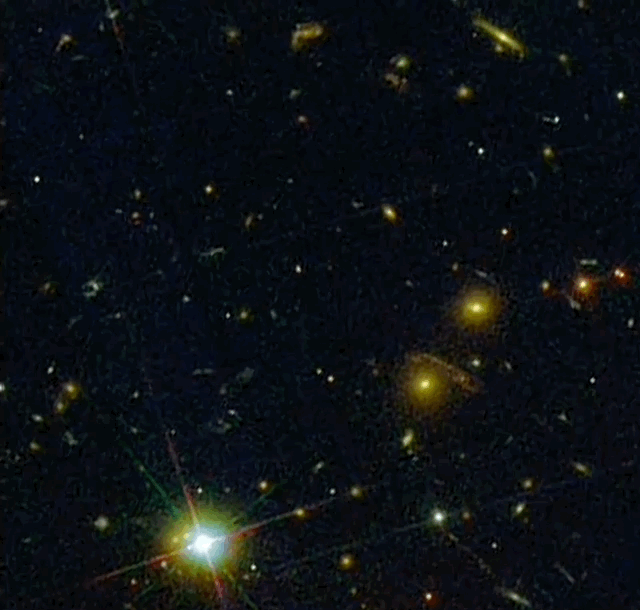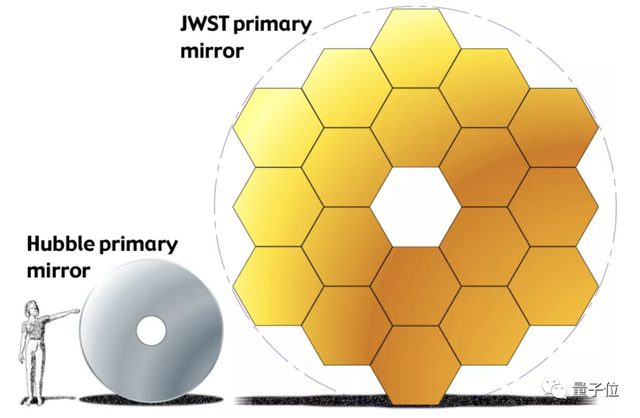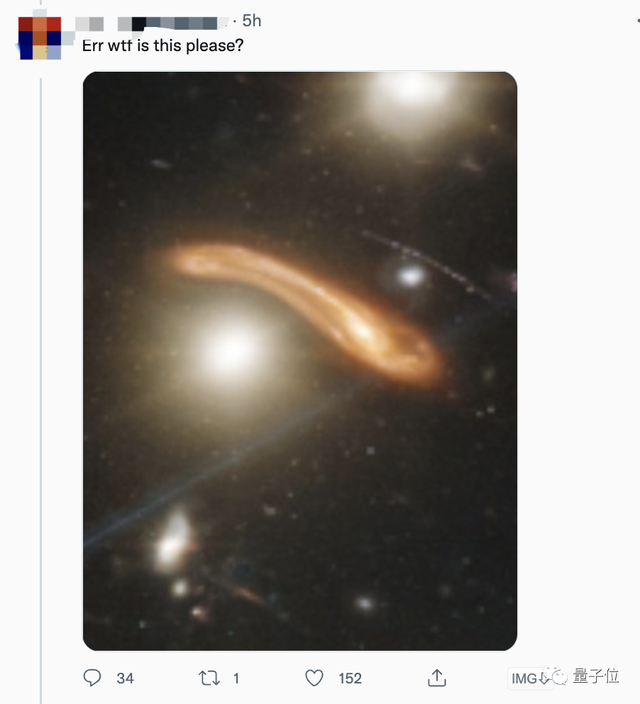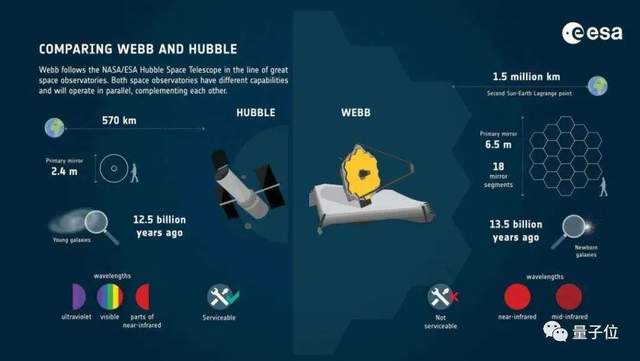The cost of tens of billions of dollars in the Weibu telescope, released the space map of 13 billion years ago
Author:Quantum Time:2022.07.12
Yang Jingfeng color from the quantity of the concave non -Temple | Public account QBITAI
For more than 20 years of hard work, the strongest space telescope in history, which spent 10 billion US dollars--
James Webb (James Webb) has just announced the deepest photo of the universe so far.

This is the beginning of Wabbu -the first full -color image released, and the beginning of humans peeping at the Big Bang of the Universe.
The shot of this galaxy group SMACS 0723, 4.6 billion light years from the earth, is equivalent to putting a grain of sand on your fingertips in a far place.
According to NASA Director Bill Nelson, there are tens of thousands of galaxies in this photo. Some of the galaxies have reached the mirror of the telescope after 13 billion years.
You know, the Big Bang is only about 13.8 billion years ago. According to "Scientific Americans", the light seen now was just a moment after the Big Bang.
Astronomers predict that Weibu will fill a mysterious blank universe in our known history -the first 400 million years after the Big Bang, and will determine the distant world of alien life.
Some netizens lamented: Humans have never been so far away and seeing the depths of the universe so clearly.
In addition, some people feel the smallness of human beings and the vastness of the universe.

As the successor of the Hubble telescope, it is naturally indispensable for the contrast of both of them.
Some netizens made a moving picture intimately and sighed: The $ 10 billion was not white.

How is this clarity done?
In fact, this galaxy group has been photographed by the Space Telescope. It is just that the Wabbu telescope has reached an amazing clarity and revealed more details in this area.
The accuracy achieved was far from being achieved by the Hubble Space Telescope. If it is more like a little, according to multiple media reports, it will be 100 times stronger.
The core hero is the main mirror of six times larger than Huber.

It is composed of 18 hexagonal lenses, weighs about 20 kilograms each.
Its caliber is about 6.5 meters (Hubble is about 2.4 meters) and the area can reach 25.4 square meters.
The larger light area means that the light of the distant galaxy is accepted.
In addition, the lens is made of high -purity metal tadpoles, so that the surface can be almost absolutely smooth.
Secondly, the band of observation is different.
Weibu is concentrated in the infrared band to observe the universe, while Hubble mainly observes ultraviolet light and visible light.
For the original star and planet, they are often hidden behind the dusty clouds that absorb visible light. But these areas emit infrared light but can penetrate this layer to reveal their internal information.
Therefore, infrared light waves are very important to observe the depths of the universe.
The earliest stars and galaxies extended when crossing the deep space. When it reached the earth, the light had extended to the infrared part of the spectrum.
In order to better accept infrared light waves, Weibu's lens was covered with gold.
Furthermore, there are different tracks. Webb is L2 at the second Laglang day, that is, 1.5 million kilometers from the earth, running around the sun; Hubble runs around the earth.
This point is because it is just right to be subject to the peace of the earth and the solar gravitation, which can allow the telescope and the earth to turn around the sun synchronously; it can also keep the sun, the earth, and the moon on the same side of the telescope, thereby blocking the interference of these heat sources.
In addition to "how to be so clear", netizens have a few doubts.
For example, some curved celestial bodies appear.

NASA officials also explained, simply speaking, the gravitational lens effect.
Although this kind of picture shows a sky, there are actually huge galaxies that are far away. The gravity of large -quality objects (galaxy groups) is enlarged or bending smaller objects (galaxy, stars or outer planets).
There are also hexagonal stars in the photos, and there is a bar in the middle.
This is because Webu is a reflected telescope. The hexagonal diffraction star is caused by the edge of the main mirror hexagonal lens, and the horizontal one comes from the sub -mirror bracket.
In other words, this can be said to be a unique logo taken by Webb.
In addition, there is a point that the staff emphasizes "嘚".
That's the synthesis of this picture by the image of different wavelengths, only 12.5 hours. If you use the Hubble Space Telescope to shoot, it may take a few weeks, and there are not so many details.

Today, such a performance is a bitter history of "one pigeon and pigeon".
Valu telescope with 10 billion yuan
In fact, from the date of birth, Weibu's goal is to move towards the depths of the universe--
Back to the early days of the Big Bang, the first batch of stars and galaxies formed in the universe after looking for the Big Bang.
It is the largest and most functional space telescope built so far.
The international cooperation projects of the National Aeronautics Aerospace Agency (NASA), the European Space Agency (ESA) and the Canadian Space Agency (CSA) are the number of universities, research institutions and related companies in more than 300 universities, research institutions and related companies in 29 states and 14 countries in the United States. Thousands of engineers and hundreds of scientists completed together.
Interestingly, the history of Webb, known as the "generation of pigeons".
One year before Hubble's vacancy (1990), some scientists proposed to build a space telescope that can observe the infrared spectrum area.
Its name was finalized in 2002 to commemorate James Webb to commemorate NASA's second director and the main sponsors of Apollo. Originally planned to cost $ 500 million and launched in 2007. However, due to various reasons, the project was seriously overdue, and the launch time was delayed several times.
In 2004, its design drawings were basically completed after many modifications, and some parts began to manufacture.
Its launch date was originally expected to be from 2007 to 2011, but it was postponed to 2014 due to the explosion of funds (the red line set at the beginning) and technical issues, and then it was pushed to 2018 and 2019.
Finally, in December last year, after more than ten years of waiting, the "Pigeon King" completed the final test and took off.
Of course, it was expected to fly on the 22nd, but it was "pigeon" for 3 days due to the weather.
(I and my last stubborn.jpg)
After 30 days of sailing, 1.46 million kilometers, and completing the "open eyes" (the mirror completely unfolded) on the road, the "Pigeon King" Weibu arrived at the "habitat" at the end of January this year: Japan and the second Laglang Lagram second Lagram. Speed L2.
At this point, this guy, which costs $ 10 billion and is nicknamed by netizens as "alien peeping equipment," officially started service.

After several months of lenses alignment, calibration, and equipment debugging, Wabu came back to its first photo this summer, proved his "powerful" and "really easy to make."
Its mission, specifically to help scientists answer the following seven cosmic puzzles:
1. When does the first star in the universe formed?
2. What is the origin of large quality black holes?
3. Is the dark matter cold?
4. How does a large -quality star exploding into a super new star?
5. Where does the water from stars like the earth come from?
6. Can the most promising exogenous planets bred life?
7. Does the swelling rate of the universe break the current cosmic model?
According to the plan, Weibu will run for 10 years, but NASA said that it can actually support 20 years.
It is worth mentioning that because Wabu is too far away from the earth, it cannot be repaired like Hubble, and can only send robots to supplement fuel.
PS. Hubble has been running for 32 years and has crashed many times. The most recent time was last year, and it is still serving.
At 10:30 tonight, there are 4 photos to be released
Undoubtedly, this photo of Weibu is the farther and clearest cosmic imaging we have seen so far.
It integrates the crystallization of many scientists for more than 20 years.
Some netizens said, "The original picture deserves slowly appreciation", "I just want to say a" good beauty "..."
Some people sighed like this:
Such a vast and deep universe is a pity if there is no foreign civilization.
However, as some aerospace enthusiasts say, this photo is just an appetizer.


Just as the Hubble Telescope helps us to crack the mystery of many universes such as dark matter, Weibu will also take us to a glimpse of the secret space, so that we can observe it more in -depth, find something more incredible, and constantly break through it. Human cognition existing universe.
In the end, remind everyone: Beijing time at 10:30 tonight, NASA will also announce the remaining 4 photos taken by Weibu, including the bottom of the ship's star, Wasp-96 B, the south-ring star NGC3132 and Stephen Five -fold galaxy.

Interested friends don't miss it.
- END -
2022 well -known Chinese and foreign companies in Sichuan Xingleshan signed a contract with 19 projects to invest 73.4 billion

Cover reporter Wang YuexinOn July 14th, 2022 well -known Chinese and foreign compa...
Observation | Take the Zhengyu high -speed rail to see Damei Chongqing

The lotus blooms, orchid fragrance.The Bayu land in June, forge ahead!Monday (13th...